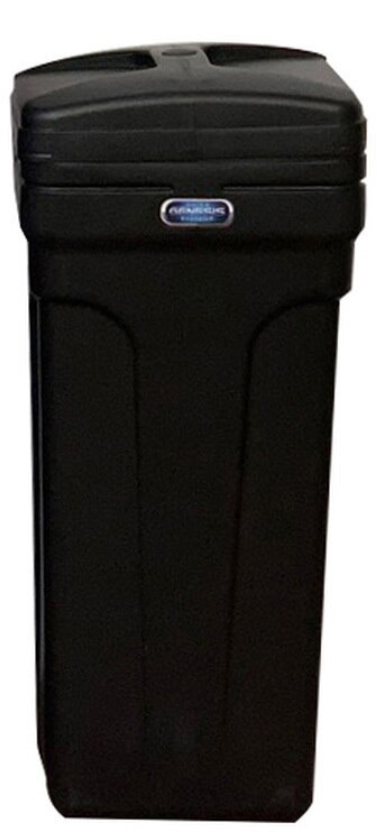How Much Salt Do You Put in a Water Softener?
Posted by Discount Water Softeners on May 20th 2020
Maintaining your Water Softener’s Brine Tank
 Water softeners were created to solve a common problem: hard water. Hard water conditions can range from slightly annoying, to highly destructive. The minerals that cause hard water don’t necessarily make water unhealthy to drink, but they do cause water spots on dishes and glassware, itchy skin and limp hair. While those side effects are a bit challenging, it’s nothing in comparison to what hard water can do to your plumbing system, fixtures, and appliances. Fortunately, there’s an effective solution to this common and potentially serious problem: the installation of a whole home water softening system.
Water softeners were created to solve a common problem: hard water. Hard water conditions can range from slightly annoying, to highly destructive. The minerals that cause hard water don’t necessarily make water unhealthy to drink, but they do cause water spots on dishes and glassware, itchy skin and limp hair. While those side effects are a bit challenging, it’s nothing in comparison to what hard water can do to your plumbing system, fixtures, and appliances. Fortunately, there’s an effective solution to this common and potentially serious problem: the installation of a whole home water softening system.
Water softening systems use ion exchange to soften water. Salt regenerates the ion resins of a softener-- it’s a necessary part of the ion exchange process. Salt is added to a softener’s brine tank periodically. The frequency depends on the size of the tank, water hardness levels, number of people in the household, and the average consumption.
The level of water softener salt in a brine tank should be at least one quarter full, no more than 4-6 inches below the top of the tank, and a few inches above the water level. Before adding any new salt to a tank, loosen any encrusted salt stuck to the sides of the tank. Solid masses of salt, known as bridges, can be manually broken up with a broom handle and dissolved with hot water poured over it.
For a properly sized water softener system, the industry standard for an average family of four, (with a water hardness level of 7-10 grains per gallon) will use approximately 10lbs of salt each week or one 40lbs bag of salt each month. Checking your tank monthly will confirm that the salt and water in your tank are at appropriate levels. There will always be water at the bottom of your brine tank, but it should be less than a foot high and 3-4 inches beneath the salt.
Refer to your owner manual for the backwash frequency and salt dose recommendations for your softener model. The more a system regenerates, the more salt that will need to be added. The amount of salt used for each regeneration cycle will determine the number of gallons that can be softened before needing to regenerate. Most water softening systems can be adjusted to use more or less salt on a monthly basis.
Adjusting Your Salt As Needed
If you find you need more than a 40lb bag of salt each month, it could be you have a larger capacity softening system than the standard tank. Or, your water may be very hard (above 10 hardness grains per gallon). Another reason you may need additional salt is if your water has an iron level of over 2 ppm. If your family has grown, a larger family typically consumes more water, and that will also cause your softener to regenerate more frequently, thus using more water and salt.
There are several types of salt used for water softening. Only salt specifically designed for water softeners should be used. Never use deicing or table salt for your system. As a general rule of thumb, the higher the purity level of the salt you use, the better. Salt that contains high levels of impurities or water-insoluble matter can cause buildup in your tank or cause your softener to malfunction. If you notice buildup, your brine tank will need to be cleaned more often. Look for the label on the salt that you purchase indicating the purity level.
Evaporated salt ranges from 99.7% to 99.99% purity. Solar salt is typically 99.6% to 99.8% pure. Rock salt runs from 95% to 98.5% depending on the source. When choosing salt, consideration should be given to salt usage, softener cleanout frequency, and softener design. Use the installation manual as a guide for your specific softening equipment.
If you forget to check your salt level and your tank is depleted, you’ll begin to notice dingy laundry, spots on your shower door, and soap that doesn’t want to lather. If you run out of salt, keep in mind that it may take a couple days to get softened water throughout the house again. It can take more than one regeneration cycle to completely soften your home’s water, so to guarantee a continuous production of softened water, keep your salt level at least half-full at all times. If you forget, you simply won’t have soft water.
Choosing the right salt for your water softener helps prevent costly maintenance and cleaning. Take into account what’s actually in your salt before adding it to your tank. If you have hard water and you don’t have a water softener, here’s a guide to get you started: https://www.discountwatersofteners.com/water-softener-comparison-fleck-vs-genesis/
If you still have questions about water softening, how to size a water softener, or salt usage, take our quiz or call the team at Discount Water Softeners (847) 462-9000 for help.


